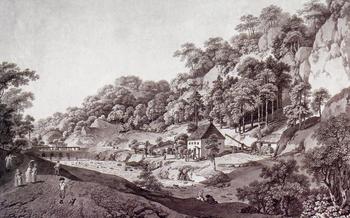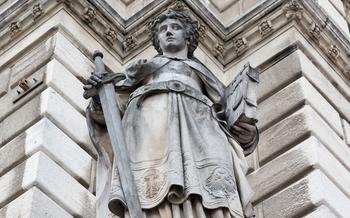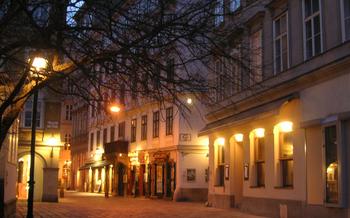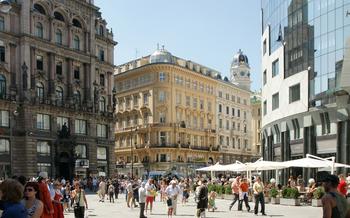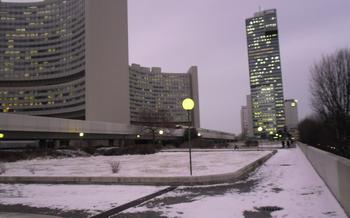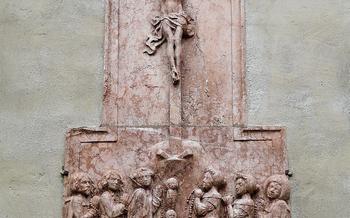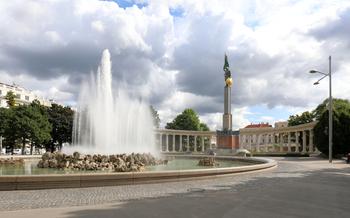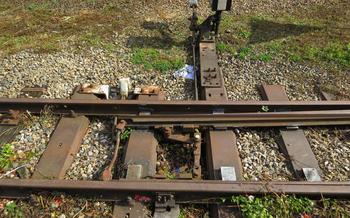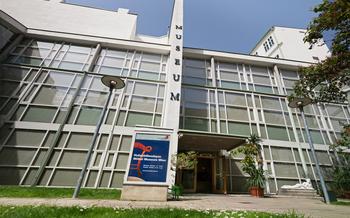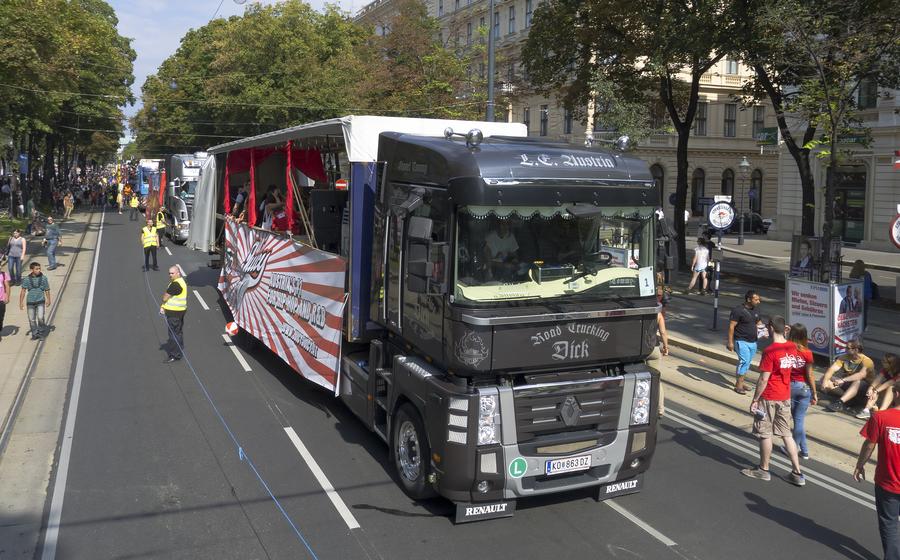
The Ringstrasse
- The Ringstrasse: A Grand Boulevard with Imperial Charm
- Hofburg Palace: A Journey Through Imperial Grandeur
- Exploring the Imperial Apartments, Sisi Museum, and Spanish Riding School
- Unveiling the Secrets of the Habsburg Dynasty
- Tips for Visiting the Hofburg Palace during Special Events
- Austrian Parliament Building: A Symbol of Democracy
- Burgtheater: Vienna's Renowned Theater Venue
- Votive Church: A Gothic Masterpiece
- Kunsthistorisches Museum: A Treasure Trove of Art
- Naturhistorisches Museum: A Journey Through Natural History
- Architectural Marvel
- Exploring the Exhibits
- Minerals and Meteorites
- Unveiling Scientific Discoveries
- Tips for Visitors
- Stadtpark: A Green Oasis in the City Center
- Kursalon Hübner: A Venue for Viennese Waltz and Music
- Hotel Sacher: Indulge in Viennese Delights
- Café Central: A Literary and Cultural Hotspot
- Insider Tip: Exploring the Ringstrasse by Tram
The Ringstrasse: A Grand Boulevard with Imperial Charm
Strolling along the Ringstrasse in Vienna is like stepping into a bygone era of imperial grandeur. This majestic boulevard, encircling the historic city center, was conceived in the mid-19th century as part of a grand urban renewal project. Emperor Franz Joseph I ordered the demolition of the medieval city walls to create a spacious ring road, envisioning it as a showcase of Vienna's imperial might and cultural heritage.
The Ringstrasse quickly evolved into a symbol of Vienna's transformation from a fortified city into a modern metropolis. It became a stage for some of the city's most iconic buildings, designed by renowned architects in various styles, from neo-Gothic to neo-Renaissance. The boulevard's harmonious blend of architectural styles creates a captivating visual narrative, telling the story of Vienna's rich history and artistic evolution.
As you wander along the Ringstrasse, you'll encounter architectural masterpieces such as the Hofburg Palace, the Austrian Parliament Building, the Burgtheater, and the City Hall. Each building holds its own unique story, reflecting different eras and influences that have shaped Vienna's identity. The Ringstrasse is a living testament to Vienna's imperial past, a grand stage where history, culture, and architecture intersect to create a truly unforgettable experience.
Personal Anecdote:
One summer evening, I decided to take a leisurely stroll along the Ringstrasse. As the sun cast a warm glow on the grand buildings, I couldn't help but feel a sense of awe at their sheer scale and beauty. The intricate details of each façade, the statues perched atop the roofs, and the harmonious interplay of colors created a magical atmosphere. It was as if time stood still as I wandered through this architectural wonderland, marveling at the grandeur of Vienna's imperial legacy.
Hofburg Palace: A Journey Through Imperial Grandeur
The Hofburg Palace, a sprawling complex of buildings in the heart of Vienna, stands as a majestic testament to the grandeur of the Habsburg dynasty. Once the imperial residence of the Austrian monarchs, this awe-inspiring palace invites you on a journey through centuries of history, power, and opulence.
Exploring the Imperial Apartments, Sisi Museum, and Spanish Riding School
Wander through the opulent Imperial Apartments, where emperors and empresses once held court and lived their lavish lives. Admire the intricate tapestries, gleaming chandeliers, and priceless works of art that adorn these grand chambers. Don't miss the Sisi Museum, dedicated to the beloved Empress Elisabeth of Austria, whose tragic life and iconic beauty continue to captivate visitors.
Witness the grace and precision of the world-renowned Spanish Riding School, where the white Lipizzaner stallions perform breathtaking dressage routines. Marvel at the harmony between horse and rider as they execute intricate maneuvers that have been passed down through generations.
Unveiling the Secrets of the Habsburg Dynasty
Within the walls of the Hofburg Palace, you'll uncover the secrets and stories of the Habsburg dynasty, who ruled over Austria for more than 600 years. Learn about their rise to power, their triumphs and tribulations, and their enduring legacy on Austria and Europe.
Tips for Visiting the Hofburg Palace during Special Events
To enhance your experience, plan your visit during one of the many special events held at the Hofburg Palace. Attend a classical concert in the grand ballroom, marvel at the Christmas markets that transform the palace grounds into a festive wonderland, or witness the annual Changing of the Guard ceremony that showcases the palace's rich military heritage.
Whether you're a history buff, an architecture enthusiast, or simply seeking a glimpse into the opulent lifestyle of the Habsburgs, the Hofburg Palace is an unmissable destination in Vienna, ready to transport you back in time and captivate your imagination.
Austrian Parliament Building: A Symbol of Democracy
The Austrian Parliament Building, located on the Ringstrasse, is a magnificent edifice that embodies the democratic spirit of Austria. Completed in 1883, this neoclassical masterpiece is a testament to the country's rich history and political evolution.
The building's imposing façade features intricate carvings, sculptures, and a grand dome, symbolizing the power and authority of the Austrian parliament. Inside, visitors can explore the opulent chambers, including the National Council Hall and the Federal Council Hall, where important decisions are made that shape the nation's destiny.
To delve deeper into the workings of the Austrian political system, visitors can join a guided tour or attend a parliamentary session, where they can witness debates, speeches, and the democratic process in action. The tours provide fascinating insights into the history, architecture, and significance of the building, as well as the role of the parliament in shaping Austria's future.
For photography enthusiasts, the Austrian Parliament Building offers numerous opportunities to capture stunning images. The symmetrical façade, adorned with intricate details, provides a picturesque backdrop for capturing the essence of Viennese architecture. The building's location on the Ringstrasse allows visitors to capture panoramic shots that include other iconic landmarks, creating a memorable record of their visit to Vienna.
Burgtheater: Vienna's Renowned Theater Venue
Nestled along the grand Ringstrasse, the Burgtheater stands as a testament to Vienna's rich theatrical heritage. With its opulent architecture, illustrious history, and world-renowned performances, the Burgtheater is a must-visit destination for any theater enthusiast.
Step inside this architectural masterpiece and be captivated by its stunning interior, adorned with intricate frescoes, opulent chandeliers, and plush red velvet seats. The Burgtheater's auditorium is a sight to behold, with its horseshoe-shaped design and excellent acoustics that create an immersive experience for every performance.
Take advantage of the opportunity to attend a performance at the Burgtheater and immerse yourself in the magic of live theater. The theater's repertoire is diverse, ranging from classical plays to contemporary productions, ensuring that there's something for every taste. Witness the exceptional talent of Austria's finest actors as they bring beloved characters to life on stage.
For a deeper dive into the Burgtheater's history and behind-the-scenes workings, join a guided tour. Learn about the theater's fascinating past, from its imperial origins to its role as a cultural beacon during turbulent times. Discover the stories of legendary actors who graced the Burgtheater's stage and the remarkable productions that have shaped its reputation as one of the world's leading theaters.
To make the most of your visit, book your tickets in advance, especially for popular productions. Opt for seats in the orchestra or dress circle for an optimal viewing experience. After the performance, take a moment to savor the ambiance of the theater's elegant foyer, where you can mingle with fellow theatergoers and discuss the evening's performance.
The Burgtheater is not just a theater; it's an institution that embodies Vienna's cultural spirit. Whether you're a seasoned theater enthusiast or a first-time visitor, a visit to the Burgtheater promises an unforgettable experience that will leave you captivated and inspired.
Votive Church: A Gothic Masterpiece
Rising majestically along the Ringstrasse, the Votive Church (Votivkirche) stands as a testament to Vienna's devotion and architectural prowess. Completed in 1879, this neo-Gothic masterpiece was built to commemorate the miraculous survival of Emperor Franz Joseph I from an assassination attempt in 185
The church's intricate façade, adorned with delicate tracery and soaring spires, captivates the eye. Its interior is equally awe-inspiring, with vaulted ceilings, stained glass windows depicting biblical scenes, and intricate carvings that transport visitors to a bygone era.
Step inside and marvel at the sheer scale and grandeur of the nave, supported by slender columns that create a sense of lightness and airiness. The high altar, a masterpiece of Gothic Revival art, features a golden tabernacle flanked by intricate sculptures.
Beneath the church lies a crypt, the final resting place of several members of the Habsburg dynasty, including Archduke Franz Ferdinand, whose assassination in 1914 sparked the chain of events leading to World War I.
The Votive Church is not just a place of worship but also a symbol of resilience, devotion, and the enduring legacy of the Habsburg Empire. Its towering presence along the Ringstrasse serves as a reminder of Vienna's rich history and its enduring spirit.
Kunsthistorisches Museum: A Treasure Trove of Art
Nestled along the magnificent Ringstrasse, the Kunsthistorisches Museum stands as a testament to Vienna's rich artistic heritage. This grand neo-Renaissance edifice, completed in 1891, houses one of the world's most comprehensive collections of art and artifacts.
Step inside and prepare to be captivated by the museum's vast array of paintings, sculptures, and decorative arts. Gaze upon masterpieces by the likes of Raphael, Titian, Tintoretto, and Caravaggio, as well as works by Dutch and Flemish masters such as Rembrandt, Rubens, and van Dyck.
Don't miss the Egyptian and Near Eastern collection, which boasts an impressive array of ancient artifacts, including a 4,500-year-old statue of the goddess Sekhmet and a sarcophagus of Pharaoh Merneptah. The museum's collection of Greek and Roman antiquities is equally impressive, featuring sculptures, vases, and jewelry that provide a glimpse into the classical world.
One of the highlights of the Kunsthistorisches Museum is the Kunstkammer, a cabinet of curiosities that houses a fascinating assortment of objects, including precious jewels, scientific instruments, and exotic artifacts from around the world.
To truly appreciate the museum's treasures, consider joining a guided tour, which will provide insights into the history and significance of the collection. Or, if you prefer to explore at your own pace, pick up an audio guide and wander through the galleries, immersing yourself in the stories behind the artworks.
Whether you're an art enthusiast, a history buff, or simply someone who appreciates beauty, the Kunsthistorisches Museum is a must-visit destination in Vienna. Prepare to be inspired and amazed by the artistic wonders that await within its walls.
Naturhistorisches Museum: A Journey Through Natural History
Nestled within the grandeur of Vienna's Ringstrasse, the Naturhistorisches Museum stands as a testament to the wonders of the natural world. Founded in 1889, this awe-inspiring institution houses a vast collection of specimens that spans the realms of zoology, mineralogy, and paleontology, taking visitors on an extraordinary journey through the diversity of life on Earth.
Architectural Marvel
The Naturhistorisches Museum is a masterpiece of neo-Gothic architecture, designed by the renowned architect Gottfried Semper. Its imposing facade, adorned with intricate carvings and statues, hints at the treasures that lie within. The grand entrance hall, with its soaring arches and marble staircase, sets the tone for an unforgettable experience.
Exploring the Exhibits
Inside the museum, visitors are greeted by a dazzling array of exhibits that showcase the wonders of the natural world. The Dinosaur Hall is a highlight, featuring a collection of fossils that bring these prehistoric giants back to life. From the massive skeletons of the diplodocus to the delicate bones of the archaeopteryx, the exhibit offers a glimpse into a long-lost world.
Minerals and Meteorites
The museum also boasts an extensive collection of minerals and meteorites, displayed in a dedicated hall. Visitors can marvel at the shimmering crystals, colorful gemstones, and rare minerals from around the world. The meteorite collection includes specimens from various celestial bodies, offering insights into the formation and evolution of our solar system.
Unveiling Scientific Discoveries
The Naturhistorisches Museum is not just a repository of specimens; it is also a center for scientific research and discovery. The museum's scientists are engaged in ongoing research projects, contributing to our understanding of the natural world. Visitors can learn about these exciting discoveries through interactive exhibits, educational programs, and guided tours.
Tips for Visitors
To fully appreciate the vastness of the Naturhistorisches Museum, it is advisable to plan a visit of at least two to three hours. Guided tours are available in various languages, providing insights into the highlights of the collection and the stories behind the exhibits. The museum also offers special exhibitions and events throughout the year, providing visitors with an opportunity to delve deeper into specific topics.
Stadtpark: A Green Oasis in the City Center
In the heart of Vienna, nestled between grand boulevards and historic buildings, lies the Stadtpark, a verdant oasis of tranquility and beauty. Designed by the renowned landscape architect Joseph Olbrich, this enchanting park was created in the late 19th century as part of the Ringstrasse development project.
With its sprawling lawns, manicured gardens, and serene ponds, the Stadtpark offers a welcome respite from the hustle and bustle of city life. Take a leisurely stroll along the winding paths, admiring the colorful flowerbeds and sculptures that adorn the park. Relax by the tranquil waters of the pond, watching the ducks glide gracefully across the surface.
Immerse yourself in the cultural and historical significance of the Stadtpark. Discover the monument dedicated to Johann Strauss Jr., the "Waltz King," whose enchanting melodies have captivated audiences worldwide. Admire the stunning Kursalon Hübner, a magnificent concert hall that has hosted legendary musicians and composers throughout its illustrious history.
Don't miss the opportunity to join a guided tour of the park, led by knowledgeable historians who will unveil the fascinating stories behind its design and significance. Or, simply relax on a park bench, soak up the tranquil atmosphere, and let the beauty of the Stadtpark transport you to a world of serenity and peace.
Insider Tip: For a unique perspective of the Stadtpark, take a ride on the Oldtimer Bim, a charming vintage tram that meanders through the park, offering breathtaking views of its many attractions.
Kursalon Hübner: A Venue for Viennese Waltz and Music
In the heart of Vienna's Musikviertel, nestled between the Konzerthaus and the Stadtpark, stands the Kursalon Hübner, an architectural gem and a renowned venue for Viennese waltz and music. Built in 1867, this elegant building with its neo-Renaissance façade is a testament to Vienna's rich musical heritage.
Step inside the Kursalon Hübner and be transported to a bygone era of imperial balls and grand concerts. The grand ballroom, with its soaring ceilings, ornate chandeliers, and polished parquet floors, is a sight to behold. As you marvel at the opulent décor, you can almost hear the strains of Strauss's waltzes echoing through the hall.
Indulge in a Viennese waltz or two, or simply sit back and enjoy the music performed by talented musicians. The Kursalon Hübner regularly hosts classical concerts, balls, and special events, offering visitors a chance to experience the magic of Viennese music in a truly authentic setting.
Before leaving, make sure to savor a cup of Viennese coffee and a slice of Sachertorte in the Kursalon's charming café. As you sip your coffee and nibble on the chocolate cake, you'll feel transported back in time to the days when Vienna was the musical capital of Europe.
Insider Tip: For a truly unforgettable experience, attend one of the Kursalon Hübner's New Year's Eve balls. Dress in your finest attire, waltz the night away, and celebrate the arrival of the new year in grand Viennese style.
Hotel Sacher: Indulge in Viennese Delights
Nestled in the heart of Vienna's old town, Hotel Sacher exudes an aura of imperial grandeur and Viennese charm. Founded in 1876 by Eduard Sacher, the hotel quickly gained renown for its exceptional hospitality and culinary delights, becoming a favorite haunt of royalty, celebrities, and discerning travelers.
Step into the elegant lobby, adorned with intricate chandeliers, marble floors, and plush furnishings, and be transported back to a bygone era of opulence and refinement. The hotel's 152 rooms and suites are individually decorated in a classic Viennese style, offering a blend of modern amenities with old-world charm.
Indulge in the world-famous Sachertorte, a rich chocolate cake layered with apricot jam and covered in a decadent chocolate glaze. Savor the flavors of traditional Viennese pastries, such as the Apfelstrudel, while sipping on a cup of Viennese coffee in the hotel's charming café.
Unveil the stories behind Hotel Sacher's imperial connections. Empress Elisabeth of Austria, also known as Sisi, was a frequent guest at the hotel and is said to have had a particular fondness for the Sachertorte. Many other notable figures, including royalty, statesmen, and celebrities, have graced the hotel's halls, leaving behind a legacy of glamour and intrigue.
For a truly unforgettable experience, book a table at the hotel's Restaurant Rote Bar, renowned for its exquisite Viennese cuisine and elegant ambiance. Or, immerse yourself in the history and traditions of the hotel by joining a guided tour, where you'll learn about the Sacher family's passion for hospitality and the secrets behind the hotel's iconic status.
Café Central: A Literary and Cultural Hotspot
Café Central, a legendary Viennese café located on Herrengasse, stands as a testament to the city's rich cultural heritage. Founded in 1876, this historic establishment has played host to a glittering array of intellectuals, artists, and writers, including Arthur Schnitzler, Stefan Zweig, and Sigmund Freud, who frequented its marble tables to engage in lively debates and exchange ideas.
Stepping inside Café Central is like stepping back in time. The grand interior, adorned with opulent chandeliers, intricate stucco work, and plush red velvet banquettes, evokes an atmosphere of elegance and sophistication. As you sip on a perfectly brewed Viennese coffee and savor a delectable pastry, you can almost feel the ghosts of literary giants whispering in your ear.
The café's menu is a testament to Viennese culinary artistry. From the iconic Sachertorte, a rich chocolate cake with a layer of apricot jam, to the mouthwatering Apfelstrudel, a flaky pastry filled with apples and cinnamon, every bite is a journey into the heart of Viennese cuisine.
Café Central is not just a place to indulge in culinary delights; it's a place to soak up the atmosphere and immerse yourself in Vienna's literary and artistic heritage. As you sit in the very seats where some of the greatest minds of the 20th century once sat, you can't help but feel a sense of inspiration and awe.
To truly experience the magic of Café Central, it's best to visit during the quieter hours, when you can savor the ambiance without the crowds. Order a Melange, Vienna's signature coffee drink, and settle into a comfortable armchair. As you sip your coffee and gaze out the window at the bustling streets of Vienna, let your imagination soar and allow the spirit of the city to wash over you.
Insider tip: If you're a literature enthusiast, be sure to visit the Café Central's library, which houses a vast collection of books and manuscripts related to Austrian literature and culture. It's a treasure trove for bookworms and history buffs alike.
Insider Tip: Exploring the Ringstrasse by Tram
For a unique perspective on the Ringstrasse, hop aboard Tram 1 or 2 and embark on a scenic journey through Vienna's imperial grandeur. Relax and enjoy the passing views as the tram meanders along the boulevard, offering a front-row seat to some of the city's most iconic landmarks. Marvel at the grand facades of the Hofburg Palace, the Austrian Parliament Building, and the Burgtheater, each a testament to Vienna's rich architectural heritage.
As the tram glides by, immerse yourself in the stories behind the buildings and monuments that line the Ringstrasse. Learn about the Habsburg dynasty, whose influence shaped Vienna's imperial legacy, and the political and cultural milestones that unfolded along this grand boulevard.
To make the most of your tram ride, choose a time when the streets are less crowded, such as early in the morning or late in the evening. This will allow you to fully appreciate the beauty of the Ringstrasse without the hustle and bustle of daytime traffic. Don't forget your camera to capture stunning photos of the imperial buildings as they pass by.
Whether you're a history buff, an architecture enthusiast, or simply someone who loves to soak up the atmosphere of a city, exploring the Ringstrasse by tram is an insider tip that will leave you with lasting memories of Vienna's imperial charm.
